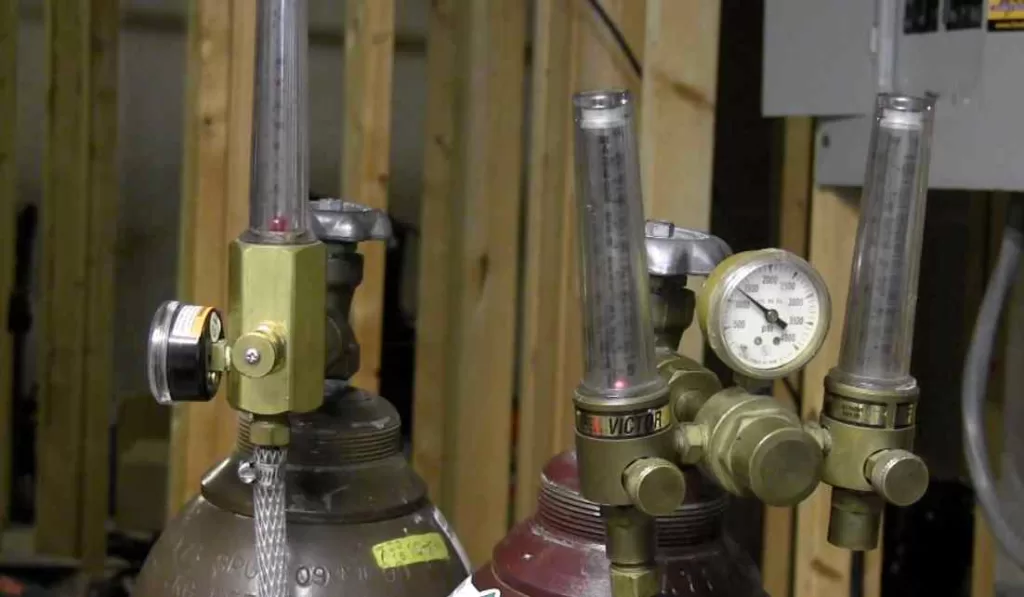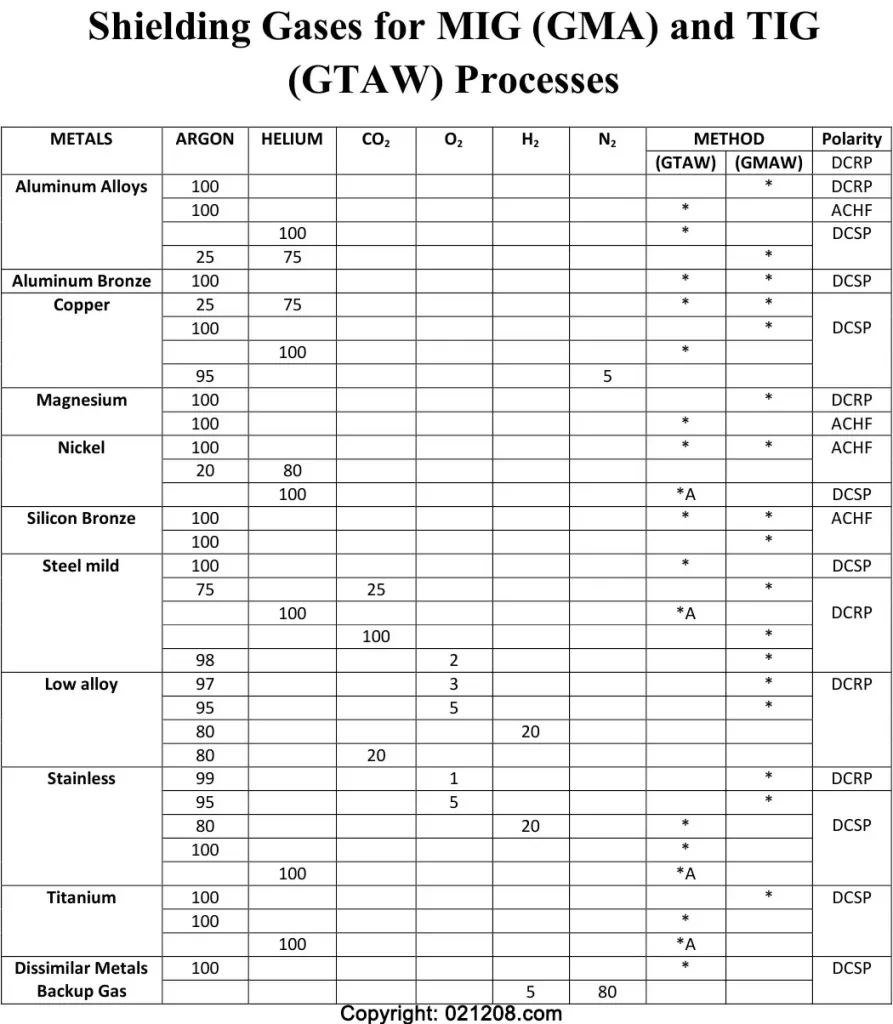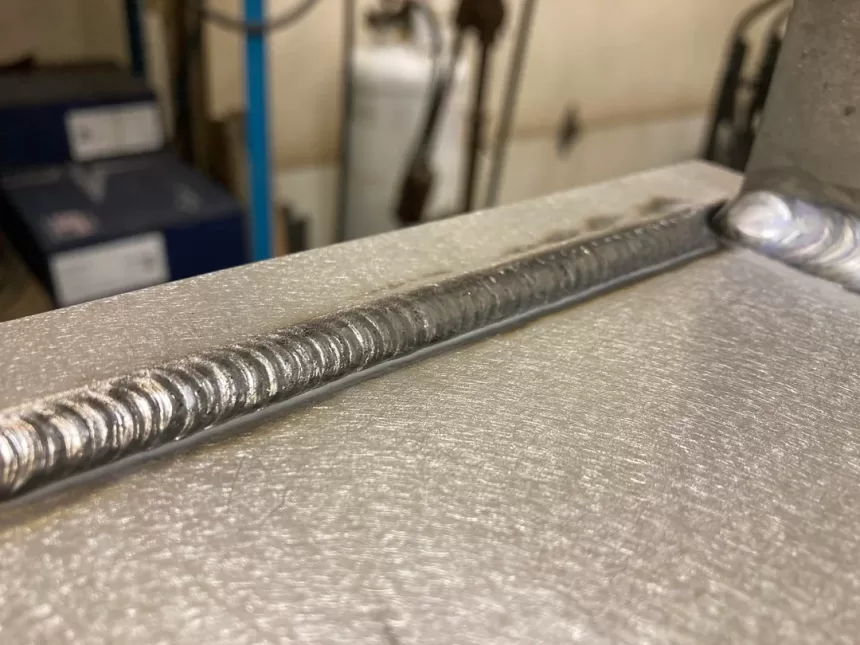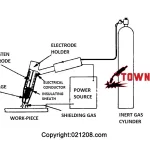Selecting the correct shielding gas for TIG (Tungsten Inert Gas) welding is crucial for achieving flawless, beautiful welds. The wrong gas choice can result in pores, cracks, irregular bead shapes, and uneven penetration. On the other hand, using the right shielding gas can make your TIG welding a breeze.
What Gas Is Best For TIG Welding?
Welding Town
Fortunately, picking the appropriate shielding gas for TIG welding isn’t as complex as it may seem, even if the gas tank might resemble a rocket. In this article, we will explore the best practices for selecting the right shielding gas to enhance your personal branding and professional development in the world of welding.

What Gas Is Best for TIG Welding?
Argon and helium, or a combination of the two, are the most commonly used shielding gases for TIG welding. Occasionally, other gases like hydrogen, nitrogen, oxygen, and carbon dioxide are added. However, the use of these additional gases must be justified and applied with care to maintain weld quality.
TIG Welding With Argon:
Argon is a noble inert shielding gas, which means it does not chemically interact with the metal, tungsten electrode, or filler wire. Its density allows it to settle over the weld pool and protect the molten metal from air contaminants. Argon is particularly effective in flat welding positions, where gravity helps keep the gas in place. It’s easy to ionize, facilitating arc starting and maintaining a stable arc.
Argon is an excellent choice for TIG welding of mild steel, stainless steel, aluminum, magnesium, and more. It’s cost-effective and readily available, making it a popular choice for most applications.
Argon is a highly versatile and widely used shielding gas in TIG (Tungsten Inert Gas) welding. It’s renowned for its effectiveness in welding various types of metals, including steel, stainless steel, aluminum, and more. Argon’s popularity in TIG welding is attributed to several key attributes that make it an excellent choice for welders.
- Versatility: Argon can be used for welding a broad spectrum of metals, making it a go-to choice for welders working with different materials. This versatility simplifies the process for welders who need to work on a variety of projects.
- Arc Stability: Argon provides exceptional arc stability, ensuring that the welding arc remains consistent and controlled throughout the process. This stability is crucial for achieving precise and high-quality welds, especially in intricate or fine work.
- Penetration: Argon is known for its ability to achieve good penetration during welding. This means that the welder can create strong and durable welds, ensuring the integrity of the joint or seam.
- Precision Welding: Because of its stability and penetration capabilities, Argon is an excellent choice for precision welding applications. It’s often used in situations where accuracy and detail are of utmost importance, such as in the aerospace and automotive industries.
- Cost-Effective: Argon is a cost-effective choice for shielding gas. It provides excellent results without breaking the bank, making it a practical option for welders looking to balance quality and cost.
- Readily Available: Argon is widely available, making it easy for welders to obtain this shielding gas. This accessibility means that welders can readily find Argon in various regions, which contributes to its popularity.
TIG Welding With Helium:
Helium, like argon, is an inert gas but has a higher thermal conductivity. This characteristic increases heat input into the joint, improving penetration and welding speed. Helium is often used in automated TIG welding but is not the best choice for manual welds. It’s more expensive than argon and requires higher gas flow rates to maintain shielding.
Helium is a valuable gas used in welding, particularly in situations where a higher heat input is necessary. Its unique properties make it a suitable choice for welding materials with high thermal conductivity, such as aluminum. Helium’s heat-carrying capacity provides a range of advantages for specific welding applications:
- High Heat Input: Helium is chosen when welders need to introduce a significant amount of heat into the welding process. This is particularly important for materials like aluminum, which require higher heat levels for proper fusion.
- Faster Welding Speeds: Helium’s ability to deliver a substantial amount of heat allows for faster welding speeds. This increased speed can be beneficial for productivity, especially in industrial applications where time efficiency is critical.
- Deeper Penetration: The high thermal conductivity and heat-carrying capacity of helium enable deeper penetration into the base metal. This is essential for creating strong and reliable welds, especially when joining thick or highly conductive materials.
- Reduced Distortion: Helium’s properties can help minimize distortion in the welded workpiece. This is advantageous when welding large or intricate structures, as it ensures that the final product maintains its intended shape and dimensions.
- Aluminum Welding: Helium is commonly used for welding aluminum, as this metal necessitates a significant amount of heat to achieve proper fusion. Helium’s heat input capabilities make it an excellent choice for aluminum welding applications.
Helium + Argon Blends:
The most common mixture is 75% helium and 25% argon, which provides a stable arc and deep penetration. Blends like 95% argon and 5% hydrogen or 98% argon and 2% nitrogen are used for specific applications, such as welding stainless steels and copper.
Argon-helium mixtures are a popular choice in the world of welding, offering a balance between arc stability and heat input. These gas blends combine the advantages of both argon and helium and are commonly used in welding, particularly for materials like aluminum and stainless steel. Here are some key points about the use of argon-helium mixtures in welding:
- Arc Stability: Argon-helium mixtures maintain good arc stability. This is essential for achieving precise and controlled welding, especially in applications where fine detail and accuracy are required.
- Heat Input Control: By blending argon with helium, welders can customize the heat input to the welding process. This flexibility is especially valuable when working with materials that have varying thicknesses or thermal conductivities.
- Aluminum and Stainless Steel Welding: These gas mixtures are often chosen for welding aluminum and stainless steel. Aluminum, for example, benefits from the higher heat input that helium provides, while the argon component helps maintain arc stability.
- Versatility: Argon-helium mixtures are versatile and can be adapted to different welding scenarios. Welders can adjust the gas blend ratio to suit their specific project requirements.
- Reduced Costs: Blending helium with argon can be more cost-effective than using pure helium while still achieving the desired heat input. This cost savings is especially significant in applications where the use of pure helium may be prohibitively expensive.
- Wide Availability: Argon and helium are readily available, making it easy for welders to access the gases needed to create these mixtures.
Can You Use the Same Gas for MIG and TIG?
No, you cannot use the same shielding gas for MIG (Metal Inert Gas) and TIG welding. MIG welding typically requires a 75% argon and 25% carbon dioxide mixture or 100% CO2 shielding gas. However, for MIG welding aluminum, a pure argon shielding gas is necessary.
Using a 75/25 MIG gas for TIG welding is not advisable because of the presence of CO2, which can result in an erratic arc and contamination of the tungsten electrode. To ensure a successful TIG weld, it’s best to use plain argon or a mixture with helium.

Choosing the Best TIG Shielding Gas
Selecting the right shielding gas depends on the metal you’re welding and your budget:
For Steel: For carbon steel, straight argon or argon/helium mixtures work well. Helium is rarely needed for mild steel welding.
For Stainless Steel: The choice depends on the type of stainless steel. Ar/He mixtures or pure argon are safe options, but avoid helium for thin stainless steel due to heat management challenges.
For Aluminum: Use pure argon or an Ar/He mixture, especially for thick aluminum. Note that 100% helium is not suitable for AC TIG welding of aluminum.
For Exotic Metals: When working with exotic metals or uncertain alloys, 100% argon is a reliable choice. Specific metals, such as copper, chromoly, nickel alloys, and magnesium, may require variations in the shielding gas.
Budget Considerations
When it comes to budget, disposable gas tanks are suitable for occasional welders, but refillable tanks offer long-term cost savings. A larger gas tank is preferable for more demanding welding tasks.
In Summary
For general TIG welding, 100% argon is a popular choice. However, modifying the gas composition with helium, nitrogen, or hydrogen can improve penetration and oxide removal based on the metal being welded. Avoid using oxygen and carbon dioxide in your gas mixture, as they can lead to poor weld quality. These gases are only suitable for specialized applications and in minimal quantities. Proper shielding gas selection is essential for achieving top-notch TIG welds and advancing your welding skills.











